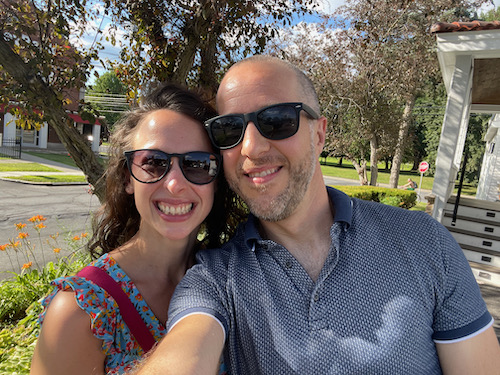The only morning meditation for anxiety you need
In my mid twenties, I started meditating. I started a morning meditation for anxiety to calm down. I needed to quiet my mind, and I’d heard from several sources that meditation helps. “Sign me up!” I thought. “Where do I start?” But before I squeaked out my first om, anxiety wreaked havoc on my wellbeing. I lived with roommates, barely made enough to pay rent, and was socially isolated, bouncing from one unimpressive temp job to another. When I wasn’t working, I obsessed over unhealthy relationships and struggled to find self worth as an actor. Defining self worth through any job or relationship is ill-advised. Defining self worth as an actor might be worse; jobs are temporary, your character is a persona, and outside validation – no matter how profound – never substitutes for a sense of self. I needed to change and guided meditation eventually helped.
To reduce stress, I spent the next 15 years exploring all types of meditations: Ram Das mediations, a 10 minute meditation for sleep, Sam Harris and the Waking Up meditation App, twice daily meditations like Transcendental Meditation – I tried it all. I even have a good friend in the meditation space who is EXCEPTIONAL (I can put you in touch). But despite my practices, I remained anxious. The culprit? Poor breathing.
The best 5 minute morning meditation for anxiety
This is a good place to say that I’m not a doctor and I don’t play one on the internet. Plus, this information is not intended to replace or complement a diagnosis. For medical advice, anxiety disorders, or both, please contact a healthcare professional.
Breathwork for anxiety is a common practice. Not only is dysfunctional breathing a troubling side effect of anxiety, there’s a correlation between breathwork practices and reducing stress symptoms. So if you’re looking for ways to decrease stress, get better sleep, or become more confident, breathing techniques will help. No matter your anxiety, breathwork is a net positive.
So what is the 4-7-8 breathing technique?
Based on the yogic practice of pranayama, the 4-7-8 breathing technique was designed to calm both body and mind. Popularized by Dr. Andrew Weil, it’s simple, takes less than five minutes, and can be done as needed. Feeling stressed? Use anxiety breathing 4-7-8. Your parasympathetic nervous system will relax your fight or flight response, offer a sense of calm, improve your heart rate variability, and lower your blood pressure. Can’t sleep? Employ this 4 second breathing technique in bed. Some claim that they fall asleep in less than a minute. Personally, I often use this technique to get back to sleep. Want to experience a deeper meditation? Add 4-7-8 breath work to the beginning of your practice. You’ll drop into a pronounced relaxation. It’s that flexible.
Box breathing vs the 4-7-8 technique
Like box breathing, the 4-7-8 breathing technique is an inhale, hold, and exhale practice. The only difference is that there’s less emphasis on the bottom of your breath (when you’re entirely empty). Best of all, this breath work for anxiety relief reconditions your response to stress. The more you do it, the more you will remain calm in stressful situations.
How to do the 4-7-8 breathing technique
Before starting: first, think the counting. Vocalizing the count will make the practice impossible. Second, be gentle with yourself. The goal is stress reduction. If any of this is challenging, slow the tempo to accommodate your breath. When my wife was pregnant, she struggled to hold her breath, so she simply held her breath for a shorter count. Despite the modification, she too experienced relief.
-
- Sit in a comfortable position (Dr. Weil recommends sitting, I often do this while lying down. Be forewarned: you could fall asleep!). I like to close my eyes, but this is up to you.
- Using your nose, inhale and fill your lungs while counting to four. I like to imagine that I’m filling my torso from my waist to my collar bones.
- Once filled, hold your breath for a count of seven. This can be challenging for some, but adjust your speed as needed. If you can’t get to 7, try counting faster.
- With your mouth open, exhale evenly and slowly for a count of eight. Your breath should sound like a steady wind. If this is challenging, again, change the tempo. The in-breath should take the least amount of time, the hold should be longer, and the out-breath should be the longest.
- Repeat steps 2 through 4 for a total of four or eight reps. I typically do 8, but do what works for you.
This should take less than five minutes! Once done, resume breathing normally. You may notice a sense of calm or tingling. That’s good. Otherwise, do your reps in one sitting once and twice daily.
Strong breathing IS a meditation for anxiety
Doing this regularly will improve your response to stress. Plus, here are a few quality YouTube videos on the technique:
Remember, any breathing exercises for anxiety will help because you are so much more than any one breath. And on the other side of stress relief is the freedom to respond instead of react.

